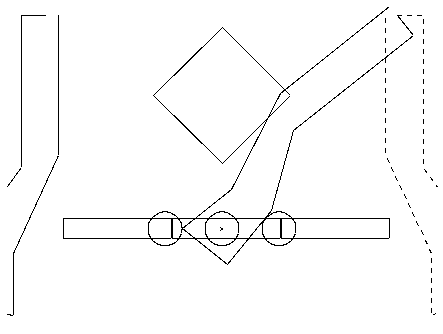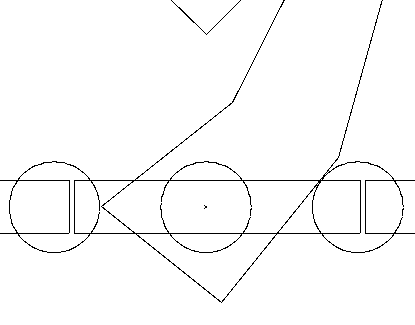
The figure below shows how one of the HRC-S shutters can be rotated to block the entire 0th order beam. The locations of each of the MCPs (one for the HRC-I and the three segments of the HRC-S) are shown. The three circles represent the size of the converging cone of x-rays from the HRMA at the plane of the shutter blade (a radius of ~15.77 mm at a distance from the focal plane of 257.86 mm). One circle is drawn for the 0th order, the other two are shifted 53 mm off the optic axis.

Below is a zoomed-in view on the zeroth order. Essentially all of the central MCP segment is at least partially vignetted, but the outer segments are for the most part un-vignetted.

In the best-case alignment, a diffracted x-ray cone that passes the shutters farther out than 53 mm will not be vignetted. This corresponds to a wavelength of about 62.7 Å (198 eV). Raytrace simulations will be required to estimate the amount of vignetting for wavelengths shorter than this.
Page created: 1998 October 5
Dr. Michael Juda
Harvard-Smithsonian Center for Astrophysics
60 Garden Street, Mail Stop 70
Cambridge, MA 02138, USA
Ph.: (617) 495-7062
Fax: (617) 495-7356
E-mail: mjuda@cfa.harvard.edu